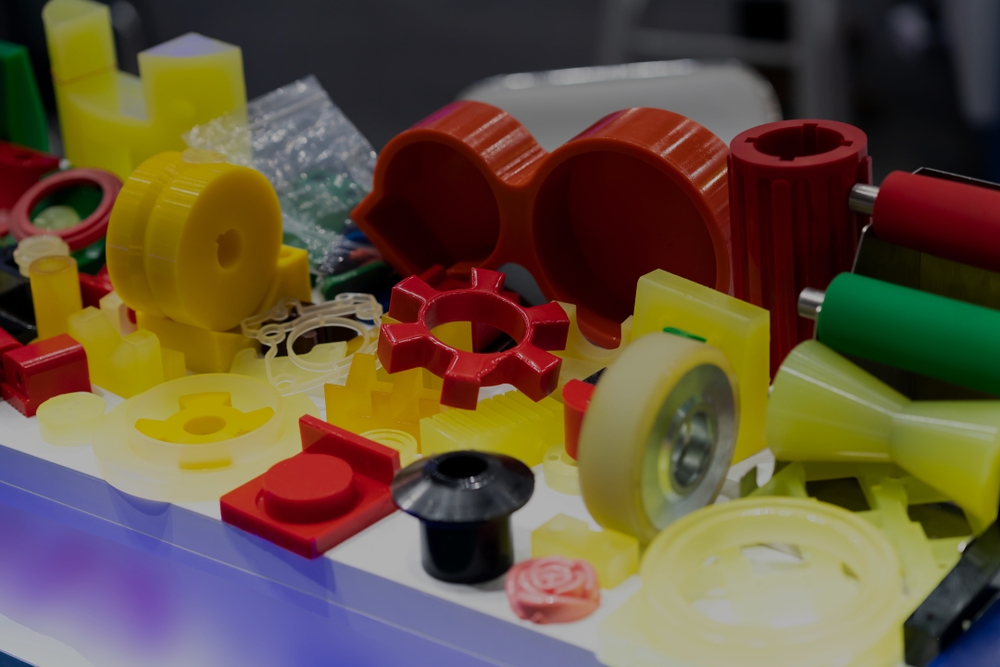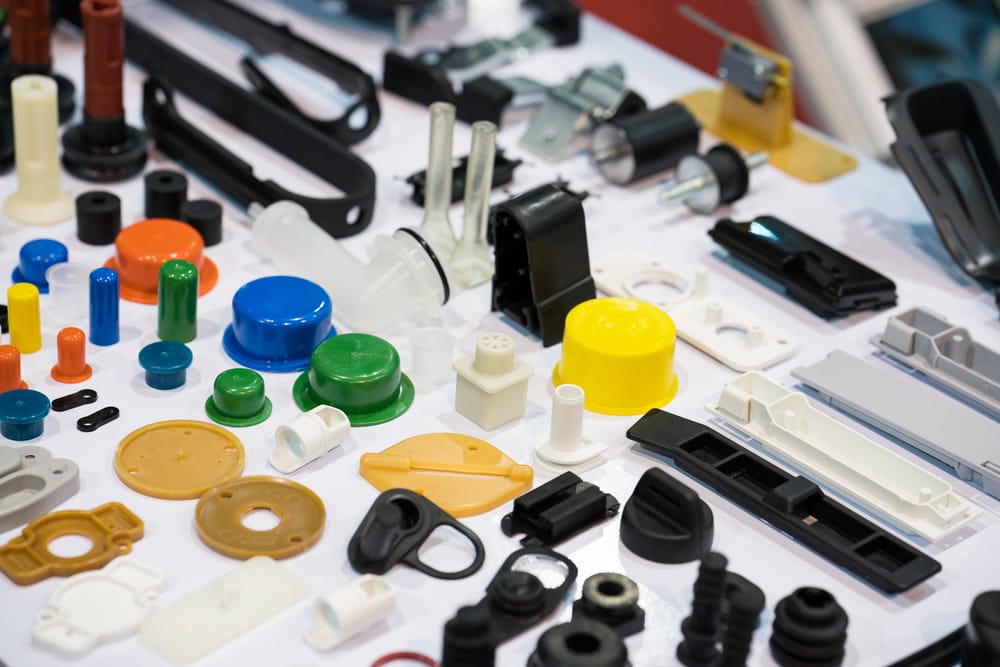

Originally published on fastradius.com on April 29, 2021
Urethane casting is a versatile traditional manufacturing process that uses a 3D-printed master pattern and a silicone mold to create end-use plastic parts. During the urethane casting process, the master pattern is placed inside a sealed box, covered with liquid silicone, and then cured. After the silicone has set, a manufacturer cuts it in half to release the master pattern — at this point, the cast urethane mold is ready for use.
To create custom cast urethane parts, engineers pour urethane casting resin — typically a polyurethane material that can mimic the physical properties of the plastic used in injection molding — into the mold and cure it in an oven. The final part generally requires little, if any, post-processing.


Less expensive and less time-consuming than hard tooling, urethane casting is ideal for rapid prototyping and low- to medium-volume production runs of complex builds. To get the most out of this manufacturing process, product teams must design for manufacturability and optimize mold design early on to streamline the production process and keep costs low. Here are five essential design tips for creating clean and functional custom cast urethane parts:
Many engineers prefer urethane casting over injection molding because the former process affords greater variation in wall thicknesses, but it’s still important to ensure that a given urethane mold design features uniform walls. Uniform walls reduce the risk of deformation during curing, ensure the mold will be filled completely and accurately, and mitigate other design issues.
A minimum wall thickness of .040” (1mm) is recommended, but there are cases in which walls may be as thin as .020”(.5mm) in small parts. For larger parts, wall thickness should always increase in proportion to the size of the part to guarantee that the walls can provide adequate support.
When two walls with different thicknesses intersect in a urethane mold design, shrinkage can occur. Since thicker walls solidify slower than thinner walls, the area to which they are attached at the nominal wall will shrink as the projection — a rib or a boss — shrinks. This causes a sunken area in the nominal wall. To minimize shrinkage and prevent sunken areas, engineers should ensure rib thickness falls between 50% and 60% of the walls to which they’re attached.
Still, sometimes urethane casted parts shrink for reasons other than a urethane mold design flaw. The final dimensions of a urethane casted part depends on the accuracy of the master pattern and mold, part geometry, as well as urethane casting materials. A shrinkage rate of 0.15% is considered acceptable, but engineers should revisit their urethane mold design if the shrink rate surpasses this threshold.
Adding ribs to a urethane mold design can increase the end part’s strength and rigidity without adding thickness. To use ribs properly, engineers should adhere to the following guidelines:
Longer ribs provide greater reinforcement, but casting a long rib can make the part difficult to mold. For this reason, a rib shouldn’t exceed a height that’s three times its thickness. To avoid the height issue altogether, engineers can use multiple short ribs instead of one long rib to increase the stiffness of the part.
The width of the rib at the intersection of the part should be 40% to 60% of the thickness of the part. If a fillet radius is included in the design, it should be at least 25% of the thickness of the part. These parameters help make the rib as strong as possible.
Engineers must draft a rib designed to reduce the possibility of sinking. Draft angles for each side should be between 0.25 and 0.5 degrees and the draft angle of each side should be equal. For textured surfaces, add an additional 1.0 degree draft for every 0.025 (0.001 inch) depth of texture.
Engineers should set consecutive ribs at least two times the thickness away from each other to evenly distribute the part’s weight across all ribs.
Rib orientation determines how and where the part experiences stress, so engineers should be careful to arrange ribs in a way that maximizes the bending stiffness of the part. If the ribs are placed in the wrong position, they won’t have any positive impact on the part’s strength.
Product teams should also be mindful of intersections and sinking when working with ribs. At the point where a rib intersects with the part, a heavy rib can cause the part to dip. To avoid sinking at the rib intersection, engineers can use fillets to ease the stress on the part’s surface and reduce sink on the opposite side of the part. The radii of the fillets should be at least a quarter of the thickness of the part. Further, coring or lightweighting the part reduces the amount of material used and helps maintain a uniform wall thickness throughout the part.
Ribs can dramatically improve an end-part’s performance, but engineers and product teams shouldn’t get carried away. Ribs are only useful when the part requires extra reinforcement. In situations where this isn’t the case, ribs are often placed improperly and do little to improve the strength or rigidity of the part. Also, unnecessary ribs increase the weight and price of the part, cause molding problems, and contribute to material waste. Engineers and product teams should keep these considerations in mind when deciding whether or not their urethane mold design requires a rib.
Drafts and undercuts are not a concern with urethane casting because liquid silicone can take the shape of any mold. However, if an engineer is using urethane casting to build a prototype that will eventually be manufactured using a different process, like injection molding, they should create the design as intended for end-use production. This might include incorporating drafts and undercuts. Long zero-draft features come with a slight risk of part breakage when extracting the part from the mold, so a slight angle may be useful, especially for larger production runs.
With urethane casting, it’s easy for designers to mold high-quality raised or recessed letters and logos into custom cast urethane parts. To make sure letters are as beautiful and readable as possible, designers should keep height or feature depth, feature width, radii on the feature, and the space between features in mind.
Product teams should leave at least 0.050” between features, though this can vary depending on the particulars of the design. All radii should be at least equal to half the feature height, but larger radii are even better. Finally, the width of all logos or letters should be twice their height.
With urethane casting and designing for manufacturability, a few small design alterations go a long way. Engineers and designers should seek to maintain uniform wall thicknesses, account for shrinkage, and ensure they’re using ribs effectively. Product teams can further optimize manufacturability by creating designs as they are intended for end-use production and making sure they leave enough space in between letters and logos to boost aesthetics.
An experienced manufacturing partner like SyBridge can help product teams simplify designing for manufacturability. We’re passionate about developing products that were once thought impossible to make, and we make it a point to keep up with the latest digital design technologies.
Product teams looking to develop a breakthrough application or optimize an existing urethane mold design can benefit from our design team’s years of experience across manufacturing processes. Contact us today to get started on your custom cast urethane parts.
Forget typical cycle times. We're pushing the boundaries of conformal cooling. While traditional approaches deliver…
Forget typical cycle times. We're pushing the boundaries of conformal cooling. While traditional approaches deliver…
From left to right: Brayden Janak (apprentice); Logan Vifaquain (CNC machining, Programming and CMM); Ron…
SyBridge Technologies is proud to announce we have been awarded the 2023 General Motors Supplier…
Today, designers and engineers are accustomed to working with digital tools in their day-to-day jobs.…
Optimizing Your Injection Molding Process for Cost-Effective Manufacturing Excellence In today’s competitive landscape, manufacturers are…